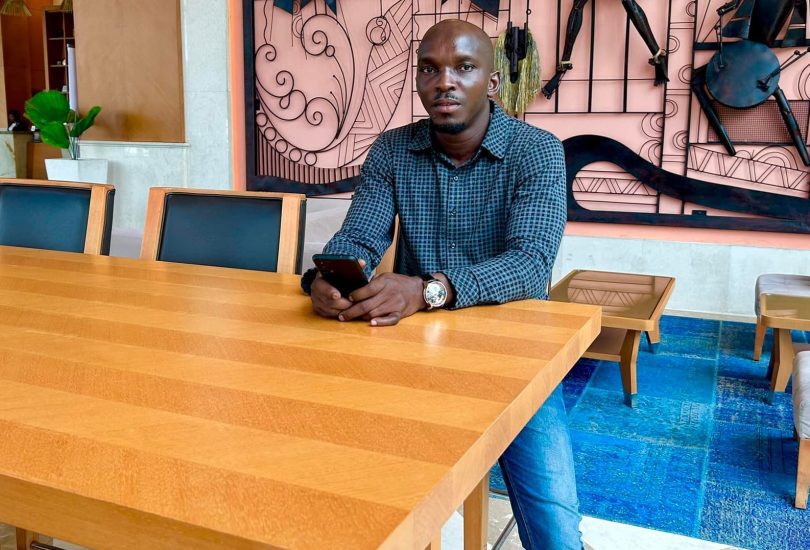John Amanam is not your ordinary sculptor. The Nigerian-born artist has a way with his hands when it comes to sculpting prosthetic like designs.
He is one of 226 million Nigerians making a living through a nurtured and exploited talent for arts. Amanam has a beat to the world with his unique craft giving back lost hope to amputees. The reality of their struggles inspired him to travel a path only elites in the orthopedic are familiar with but he has been successful with every design he work on.
Who is John Amanam?
John Amanam was born in Uyo, Akwa-Ibom State in Nigeria. He grew up with an undefined love for arts which is innate as his grandparents were prolific artists. Spending time with them when he was young. Years into his profession have brought him to the reality that art is hereditary.
“My grandparents were artists, and so was my father. I come from a family of artists, so it runs through our blood,” he told Ventures Africa in an interview.

John Amanam, a Nigerian sculptor who designs prosthetics. Photo/
His exposure to arts at an early age ran deep in his veins that he decided to pursue a Fine and Industrial Arts degree at the University of Uyo. It wasn’t an easy decision to make because his parents were opposed to it. They wanted him to pursue a different course that I more lucrative than arts.
Left with no choice, he enrolled for a bachelor’s degree in philosophy but he dropped it in second year and chose to pursue a degree in arts.
Who is the Prosthetic Artist in Nigeria?
Surprisingly, he did not know that he would be a sculptor doing prosthetics. But as fate would have it, his brother survived an accident but had to be amputated and it was hectic importing a prosthesis.
What was even disappointing for his family is that most prosthetics they got for importation were all white and they needed something to blend with dark skin tone. This hustle gave him an idea to make one for his brother using the knowledge he had from his arts degree.
While it was a sad occurrence, it was also a blessing in disguise as he discovered a gap in the global market for dark prosthesis and he tapped on it. This marked the birth of his company, Immortal Cosmetic Art Ltd.

Prosthetics created by John Amanam. Photo/Kitheka Don on X
“I somehow thought black prostheses were already in vogue. I thought there was someone else or some other company making them. I thought maybe I just couldn’t find them. I then decided to make one for him myself. I started researching and then became passionate about prostheses. Before then, I did not know black prostheses were not in the market. It was after I started getting calls and recommendations that I knew I was the only one doing it,” he said.
John Amanam swiftly combined compassion with entrepreneurial instinct when he recognized there was high demand and absence of supply. His innovative solution became the new solution. He observed the lack of such services within Africa were a big gap in the market and he now had an opportunity to bridge it. The difficulties encountered in ordering from abroad fueled his determination to provide a solution for people who needed prosthetics.
The innovation behind black prosthetics by John Amanam has earned him a lot of praise in and out of Nigeria. International media outlets such as Al Jazeera, Reuters among others have featured his glorious work severally.
His journey in this field isn’t one without challenges. Foremost among them is the scarcity of knowledge in the field. While Amanam draws inspiration from art legends such as Leonardo DaVinci, creating prosthetics presented a unique set of challenges with no established figures to emulate.
Today, he is the beacon of hope for many aspiring artists who want to venture into this industry. He has honed his importation skills for all the materials he uses in his work. But, he wishes there were companies in Nigeria which produce the raw materials required for his work. The biggest undoing about this is that Immortal Cosmetic Art doesn’t penetrate the grassroots as he would wish.
“I would love it if people in rural communities could use our works. But the materials are quite expensive. That would be achievable with government intervention and voluntary partnerships. Rural areas are a huge market, and that’s more than we can meet on our own,” he added.
Nevertheless, he is ready to keep pushing beyond the barriers together with his team of seven handcrafters. He already has his work patented meaning any of his future competitors will have to seek his approval.








